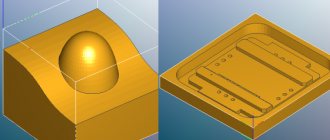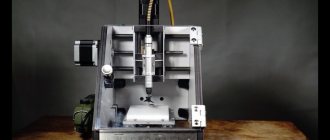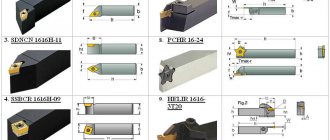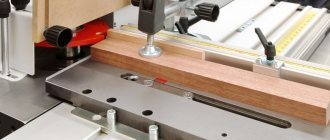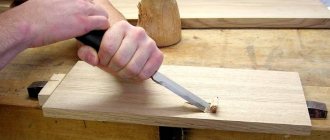If your work depends on working on a milling machine, then increasing the number of products should be a priority for you. A magnetic plate will be a good tool for increasing productivity.
A magnetic plate for a milling machine will allow you to process more than one part at once, unlike standard jaws. And processing will be carried out with utmost precision and efficiency. Let's take a closer look at all the features of this device.
What is a magnetic plate?
Magnetic plates are a special type of equipment for milling machines, which is needed for processing metal elements, which is necessary for fixing metal elements on the working surface of the machine under the influence of electromagnetic attraction.
Before their appearance, cams were actively used to hold workpieces, which ensured maximum retention during operation. But still, magnetic plates have a number of more outstanding advantages compared to cams:
- there is an alternative to processing several workpieces at once;
- the maximum precision of the impact is ensured, which is associated with the phenomenon of heating the metal part. It expands, but does not deform like a part in clamps;
- provide high reliability of fastening;
- maintain basic performance characteristics at the original level for the entire period of use;
- do not require annual (or more often) technical inspection and repair activities.
But these devices also have disadvantages:
- not used in work that requires high cutting force;
- residual magnetism of workpieces made of steel, but a demagnetizer will help cope with this feature.
Reference!
Demagnetizer (demagnetizer) - is necessary to deprive the attractive forces of a tool or workpiece so that metal shavings do not stick to it. Magnetic plates are most often used on grinding, milling and lathes for processing metal-containing products.
Important!
Magnetic plates are very rarely included in the basic equipment of the machine, so they must be purchased and installed separately, taking into account the necessary parameters of the product.
DIY electromagnetic table
Magnetic plates for grinding machines are a special class of metalworking equipment that is designed to hold steel workpieces on the working surface under the influence of electromagnetic attraction forces.
It would seem, why use such a sophisticated design when you can use traditional cams as a clamp, which reliably clamp the workpiece and provide maximum rigidity during processing? In fact, electromagnetic fixation using magnetic plates for grinding machines has a number of advantages, which we will discuss below.
The key advantage is the ability to operate the equipment in multi-threaded mode.
The master can simultaneously fix several workpieces on one installation, thereby increasing the productivity of his work by an order of magnitude.
In addition, the magnetic plate for the grinding machine can ensure extreme precision in machining the workpiece.
This is due to the fact that during the grinding process the metal part heats up and, accordingly, expands.
In this case, the workpiece clamped in a vice is deformed, while the workpiece mounted on the electromagnetic plane expands freely on the working surface.
It is worth remembering that the plate is not capable of providing as much force as the locking cams.
In addition, if an emergency interruption of the power supply occurs, the workpiece will fall off the working surface.
That is why the scope of application of magnetic plates for grinding machines excludes work that requires high cutting forces.
Another disadvantage of such installations is the phenomenon of residual magnetism inherent in steel workpieces that were processed in this way. Fortunately, you can cope with the problem using a demagnetizer, which in most cases allows you to close your eyes to the above-described drawback.
Rectangular magnetic plate passport (Х41000-220 or Х41150-400)
Rectangular magnetic plates are intended for securing ferromagnetic workpieces during processing on surface grinders, milling, planing and other machines, as well as as independent devices when performing metalworking, welding, marking, assembly, inspection and other work.
Design Features
The main structural elements of a magnetic plate for a milling machine are:
- The body of the device is made from soft steel. Its base has special oppositely charged protrusions.
- A special lid that covers the work surface. The cover is one pole, and the remaining surface is the opposite pole.
- Coils - designed to pass direct current.
- A magnetic block is a movable element that moves due to the work of an eccentric top.
Specifications
Technical conditions for the production of magnetic plates are regulated by GOST 16528-87 . It describes all the characteristics of stoves with different types of control.
The main parameters affecting the operation of magnetic plates are:
- Overall dimensions – minimum starting from 10x25 cm and maximum up to 32x100 cm. The final dimensions of the workpiece depend on this value. Also, the significant size of the plate increases the load on the machine’s work table.
- Magnetic force - acts constantly and when not in working position it is prevented by blocks of non-magnetic material. The range of action of this value is 50–120 N/cm².
- The distance between magnetic poles or coils. The smallest size available for the part being manufactured depends on it.
DIY electromagnetic tables
If your work depends on working on a milling machine, then increasing the number of products should be a priority for you. A magnetic plate will be a good tool for increasing productivity.
A magnetic plate for a milling machine will allow you to process more than one part at once, unlike standard jaws. And processing will be carried out with utmost precision and efficiency. Let's take a closer look at all the features of this device.
How to make a powerful electromagnet
An electromagnet is a magnet that works (creates a magnetic field) only when electric current flows through a coil. To make a powerful electromagnet, you need to take a magnetic core and wrap it with copper wire and simply pass current through this wire.
The magnetic core will begin to be magnetized by the coil and begin to attract iron objects. If you want a powerful magnet, increase the voltage and current, experiment.
And so as not to have to worry about assembling the magnet yourself, you can simply remove the coil from the magnetic starter (they come in different types, 220V/380V). You take out this coil and insert a piece of any piece of iron inside (for example, an ordinary thick nail) and plug it into the network.
This will be a really good magnet. And if you don’t have the opportunity to get a coil from a magnetic starter, then now we’ll look at how to make an electromagnet yourself.
To assemble an electromagnet, you will need wire, a DC source, and a core. Now we take our core and wind copper wire around it (it’s better to turn one turn at a time, not in bulk - the efficiency will increase).
If we want to make a powerful electromagnet, then we wind it in several layers, i.e. When you have wound the first layer, go to the second layer, and then wind the third layer.
When winding, keep in mind that what you are winding, that coil has reactance, and when flowing through that coil, less current will flow with more reactance.
But also keep in mind that we need and important current, because we will use current to magnetize the core, which serves as an electromagnet. But a large current will greatly heat the coil through which the current flows, so correlate these three concepts: coil resistance, current and temperature.
When winding the wire, select the optimal thickness of copper wire (about 0.5 mm). Or you can experiment, taking into account that the smaller the cross-section of the wire, the greater the reactance will be and, accordingly, the less current will flow. But if you wind with a thick wire (about 1mm), it would not be bad, because
the thicker the conductor, the stronger the magnetic field around the conductor and, on top of that, more current will flow, because the reactance will be less. The current will also depend on the frequency of the voltage (if on alternating current). It’s also worth saying a few words about layers: the more layers, the greater the magnetic field of the coil and the stronger the core will magnetize, because
When layers are superimposed, the magnetic fields add up.
Okay, the coil has been wound and the core has been inserted inside, now you can start applying voltage to the coil. Apply voltage and begin to increase it (if you have a power supply with voltage regulation, then gradually increase the voltage).
At the same time, we make sure that our coil does not heat up.
We select the voltage so that during operation the coil is slightly warm or just warm - this will be the nominal operating mode, and you can also find out the rated current and voltage by measuring on the coil and find out the power consumption of the electromagnet by multiplying the current and voltage.
General information about the design
Mechanical magnetic plate
The main advantage of magnetic plates is their good workpiece fixation rate, as well as their relatively small size. To complete the machines, two types are used: electromagnetic and magnetic. They have significant design differences.
The stove has a fairly simple operating principle. A magnetic field is created on its surface, which holds metal-containing workpieces on the table surface.
This allows you to process not only the outer plane of the materials, but also the end areas. In some cases, it is possible to grind several parts at the same time.
Thanks to its magnetic properties, additional equipment or auxiliary devices can be installed on the work surface.
Design features of various types of magnetic plates:
- electromagnetic plate. It consists of a housing, inside of which there are two groups of electromagnetic coils. They are separated by a non-magnetic layer. When electricity is supplied to the installed part, an electromagnetic field is formed, which fixes the workpiece. The disadvantage of this design is the lack of clutch in the event of a power outage. Therefore, it is recommended to install a machine deactivation relay when such a situation occurs;
- magnetic plate. Structurally, it resembles an electromagnetic model. It also contains two groups of magnets that differ in polarity. Blocks of non-magnetic material are installed on the working surface of the stove. In their normal position, they prevent the emergence of a magnetic field. With the help of a mechanical device, they are shifted, as a result of which the workpiece is securely fixed on the table.
The mechanical magnetic plate has a high degree of reliability, but to turn it on/off you need to turn the lever. This affects the speed of changing the positions of parts, and as a result, productivity. Therefore, electromagnetic models are most often used for mass production, and mechanical ones for more precise processing.
In addition to horizontally oriented grinding plates, a device for cross-drilling rollers can be used. Magnets are located along the workpiece, which makes it possible to process cylindrical parts of complex shapes.
Technical specifications
Magnetic plates are rarely included as standard equipment in factory equipment. Most often they are purchased separately. Therefore, it is important to know their main technical characteristics, which must correspond to the parameters of a specific machine model.
The determining parameter is the dimensions. The size of the plate can vary from 10*25 cm to 32*100 cm. Moreover, as the dimensions of the device increase, its weight increases. This directly affects the maximum weight of the workpiece, since the plate is installed on a standard work table.
The main parameters that a magnetic plate should have:
- dimensions and weight. Not only width and length are taken into account, but also height. It may affect the maximum permissible part size;
- specific force of attraction. It must be uniform over the entire installation plane. Typically this parameter ranges from 50 to 120 N/cm²;
- distance between poles. This characteristic determines the minimum size of the workpiece.
During operation, the magnetic plate can change the geometry of the workpiece. Therefore, the process of installing and subsequently removing the part should be as careful as possible. You should also take into account the main disadvantage of electromagnetic models - heating of the surface during activation. This is not only the main reason for device failure, but also affects the properties of the workpiece.
The video shows an example of how a small magnetic plate works:
stanokgid.ru
Magnetic plates for grinding machines
Magnetic plates for grinding machines are a special class of metalworking equipment that is designed to hold steel workpieces on the working surface under the influence of electromagnetic attraction forces.
It would seem, why use such a sophisticated design when you can use traditional cams as a clamp, which reliably clamp the workpiece and provide maximum rigidity during processing? In fact, electromagnetic fixation using magnetic plates for grinding machines has a number of advantages, which we will discuss below.
The key advantage is the ability to operate the equipment in multi-threaded mode. The master can simultaneously fix several workpieces on one installation, thereby increasing the productivity of his work by an order of magnitude. In addition, the magnetic plate for the grinding machine can ensure extreme precision in machining the workpiece.
It is worth remembering that the plate is not capable of providing as much force as the locking cams. In addition, if an emergency interruption of the power supply occurs, the workpiece will fall off the working surface. That is why the scope of application of magnetic plates for grinding machines excludes work that requires high cutting forces.
Another disadvantage of such installations is the phenomenon of residual magnetism inherent in steel workpieces that were processed in this way. Fortunately, you can cope with the problem using a demagnetizer, which in most cases allows you to close your eyes to the above-described drawback.
User manual
The magnetic plate should be re-opened and the equipment passport should be examined.
- Place it on the machine table.
- Check that the mounting is correct and start working.
- A workpiece made of ferromagnetic material must be placed on the working surface in the required position and the lever must be rotated 180 degrees. Check the reliability of the fastening.
- Start processing the workpiece.
- Metal shavings generated during operation can be removed with a brush after turning the handle 180 degrees. Then, after cleaning the surface, you need to fix the workpiece again using the handle.
- Upon completion of work, turn the handle and remove the workpiece.
Expert advice and price
The best-selling models of magnetic plates are:
- MP 400x125 sinus 2S7208-0003. Its advantage is the reliable clamping of workpieces using the magnetic currents of permanent magnets, which guarantees a constant clamping force throughout the entire operation. The price of such a device is from 50 thousand rubles.
- MP 250x100 (7208-0001) – slightly cheaper than the previous model, sold from 19 thousand rubles.
- MP flat X91 300x680 (66120-6) – makes it possible to process parts with a minimum thickness of 8 mm/7 mm. Its cost is from 170 thousand rubles.
It provides reliable fixation of the workpiece, which affects the quality of the work. Another good thing about this device is that the technical parameters and possibilities for using such a design remain the same over time. This quality arouses buyers’ interest in electromagnetic cookers.
Do-it-yourself electromagnetic table - Metalist's Handbook
Magnetic plates for grinding machines are a special class of metalworking equipment that is designed to hold steel workpieces on the working surface under the influence of electromagnetic attraction forces.
It would seem, why use such a sophisticated design when you can use traditional cams as a clamp, which reliably clamp the workpiece and provide maximum rigidity during processing? In fact, electromagnetic fixation using magnetic plates for grinding machines has a number of advantages, which we will discuss below.
The key advantage is the ability to operate the equipment in multi-threaded mode. The master can simultaneously fix several workpieces on one installation, thereby increasing the productivity of his work by an order of magnitude. In addition, the magnetic plate for the grinding machine can ensure extreme precision in machining the workpiece.
This is due to the fact that during the grinding process the metal part heats up and, accordingly, expands. In this case, the workpiece clamped in a vice is deformed, while the workpiece mounted on the electromagnetic plane expands freely on the working surface.
It is worth remembering that the plate is not capable of providing as much force as the locking cams.
In addition, if an emergency interruption of the power supply occurs, the workpiece will fall off the working surface.
That is why the scope of application of magnetic plates for grinding machines excludes work that requires high cutting forces.
Another disadvantage of such installations is the phenomenon of residual magnetism inherent in steel workpieces that were processed in this way. Fortunately, you can cope with the problem using a demagnetizer, which in most cases allows you to close your eyes to the above-described drawback.
Table - Technical characteristics of rectangular magnetic plates
| Model | Width, mm | Plate length, mm | Base length, mm | Slab height, mm | Magnetic layer thickness, mm | Pitch of magnetic elements, mm | Weight, kg |
| Х41100-220 | 100 | 220 | 240 | 40 | 18 | 1+4 | 7 |
| X41150-400 | 150 | 400 | 420 | 40 | 18 | 1+4 | 19 |

